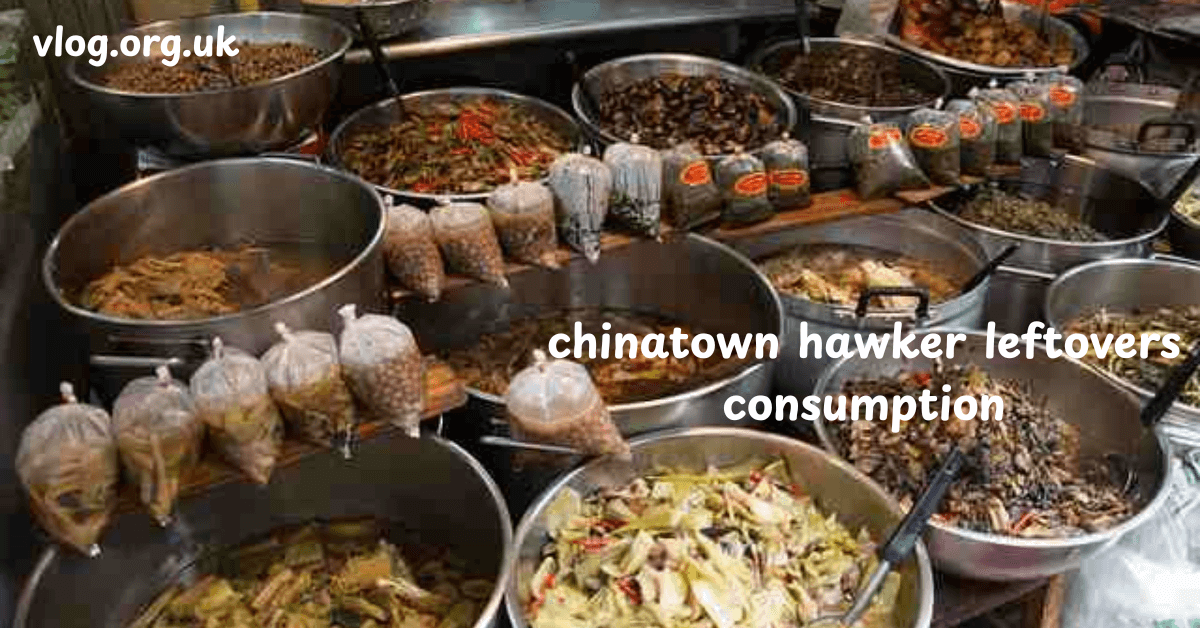
Chinatown Hawker Leftovers Consumption: A Powerful Reflection on Food, Frugality, and Humanity
In the bustling heart of many Asian cities like Singapore, Penang, Bangkok, and Kuala Lumpur, the vibrant chaos of hawker centers serves up more than sizzling dishes—it also reveals a hidden tale of resilience, ethics, and survival. The phenomenon of “Chinatown Hawker Leftovers Consumption” isn’t just about food—it’s about culture, sustainability, and community.
This practice—quiet, discreet, often taboo—paints a powerful portrait of urban food survival. Whether it’s a plate of half-eaten Hainanese chicken rice or untouched mee goreng left on a table, these leftovers become lifelines for many. As cities grow wealthier, pockets of poverty still endure, and food waste becomes both an ethical dilemma and a source of nourishment.
What is Chinatown Hawker Leftovers Consumption?
At its core, Chinatown Hawker Leftovers Consumption is the practice of retrieving and eating food left behind by strangers in hawker centers. These are not food scraps tossed in the trash, but rather meals partially eaten—or sometimes untouched—abandoned on tables.
This behavior isn’t unique to any one city. From the street food stalls of Bangkok to the community tables in San Francisco’s Chinatown, similar practices unfold, often hidden in plain sight. It’s a grassroots response to systemic issues: food insecurity, frugality in urban life, and the immense volume of hawker center food waste.
Why Does This Happen in Chinatown Hawker Centers?
Chinatown hawker centers are magnets for street food culture. They serve up thousands of plates daily, from char kway teow to steaming bowls of laksa. But with volume comes waste. After the lunch rush, many tables are dotted with half-eaten meals, waiting for cleaners—or scavengers.
This dynamic plays out due to economic disparities. Undocumented workers, urban poor, and even curious sociology students have been observed engaging in food scavenging practices. The allure isn’t just hunger—it’s sustainability, rebellion against waste, and sometimes, the thrill of transgression.
The Unofficial Rules of Eating Leftovers
Though unwritten, there are rules. First: don’t touch anything clearly contaminated. Second: wait until the original diner has clearly left. Third: be quick, discreet, and respectful. For those who partake, these rules offer structure, dignity, and a way to avoid confrontation.
Third-generation hawker vendors, like Mr. Lim from Penang, sometimes acknowledge these silent codes. “If they’re respectful and don’t make a mess,” he shrugs, “I let them be. Better food in bellies than bins.” This subtle tolerance reflects the unspoken social contract between the givers and the takers.
The Ethical and Health Debate
The ethics of eating abandoned food are murky. On one side: why waste edible meals when others are starving? On the other: what about hygiene, dignity, and safety? Public health experts voice concerns about foodborne illnesses and contamination risks.
Still, vegan activists and eco-conscious eaters argue that food reuse at hawker stalls could be a sustainable practice if approached responsibly. Tools like OLIO, a food-sharing app, are already helping bridge this gap—connecting surplus meals with willing recipients, legally and safely.
Who Eats These Leftovers?
The people who partake in Chinatown hawker leftovers consumption span a wide spectrum. Some are undocumented workers avoiding shelters, others are elderly urban poor surviving on dwindling pensions. Still others are students or social experimenters seeking to understand urban food poverty.
In San Francisco’s Chinatown, sociology students have observed that some people do this not out of necessity, but as a form of protest—highlighting the absurdity of waste in a land of plenty. It’s a poignant reminder that food, while essential, is also deeply symbolic.
Scene One: The Table That Never Fully Clears
Imagine a table at Singapore’s Maxwell Food Centre. A plate of mee goreng sits untouched—its owner distracted by a phone call, eventually walking away. Minutes pass. A man in his sixties edges closer, scans the crowd, and quietly sits down. He eats, not ravenously, but deliberately.
Scenes like this play out countless times daily. They’re not acts of desperation but calculated choices—survival tactics shaped by necessity and a keen awareness of risk and reward. The table, once a dining spot, becomes a battleground for hunger, ethics, and perception.
Cultural Attitudes Towards Food Waste
In many Asian cultures, wasting food is considered disrespectful—not just to the cook, but to nature and society. Yet rapid urbanization has made waste an unfortunate byproduct of convenience culture. What happens when tradition clashes with modern abundance?
Community food sharing, once a norm in village life, is making a comeback through grassroots efforts—community fridges in Penang and OLIO volunteers in Kuala Lumpur are examples. These initiatives show that while society may stigmatize leftovers, solutions rooted in cultural respect and sustainability are possible.
Legal Grey, Moral Grey, Urban Grey
Is it legal to eat someone else’s leftovers? That depends. In Singapore, scavenging food from public tables is frowned upon, but not strictly illegal. In Bangkok and Kuala Lumpur, there are no clear regulations, only social cues and public perception.
The moral ambiguity is even more complex. Are we enabling unsanitary behavior—or practicing ethical food consumption? Are diners entitled to throw away food without guilt—or should they bear moral responsibility for their waste? This legal-moral tension defines much of the leftover conversation.
Inside the Hawker Mindset
Talk to a hawker and you’ll hear pragmatic views. Mr. Lim, who has run a char kway teow stall for over 40 years, says, “Back in my day, we never wasted. Even scraps fed chickens.” For him, leftovers are a part of a circular food system, not a problem.
Yet many younger vendors feel pressure to maintain hygiene standards and avoid association with what they view as a “scavenger economy.” Their concerns are real: reputation, cleanliness, and compliance with health regulations. Still, the cultural disconnect reveals changing values—and the tension between heritage and modernity.
Alternatives to Eating Leftovers
Thankfully, alternatives are growing. Food rescue programs, apps like OLIO, and nonprofit initiatives are stepping in to reduce hawker food waste responsibly. Community fridges across Chinatown and Penang invite residents to give and take freely—no questions asked.
Moreover, vegan activists and sustainability advocates are collaborating with hawker centers to encourage smaller portions, food donations, and even “pay-it-forward” models. These approaches preserve dignity, reduce waste, and support those in need—without stigma.
Conclusion and Reflections on Food Waste
Chinatown Hawker Leftovers Consumption is a mirror—reflecting not just what we eat, but who we are. It forces us to confront hard truths about hunger, privilege, and waste in our modern cities. And yet, within this gritty reality lies hope.
Through community, technology, and a little courage, we can redefine how we view leftovers—not as trash, but as treasure. In every abandoned plate, there’s a story—a second chance. It’s time we paid attention.
FAQs
1. Is it safe to eat hawker center leftovers? While many leftovers may appear edible, there are genuine health risks such as bacteria and contamination. It’s crucial to use judgment and prioritize safety. Some urban programs aim to improve hygiene in food-sharing practices.
2. Is eating someone else’s food legal in Singapore or Malaysia? There’s no law explicitly banning leftover consumption in public spaces, but it’s socially frowned upon and may be discouraged by hawker center management for hygiene reasons.
3. Why do people eat abandoned food? Motivations range from poverty and food insecurity to sustainability, anti-waste activism, or even curiosity and social experimentation.
4. What are alternatives to scavenging? Food-sharing apps like OLIO, community fridges, and food rescue charities offer safer, structured ways to access surplus food.
5. What can I do to reduce food waste at hawker centers? Order smaller portions, avoid over-ordering, share meals, and support vendors that donate unsold food. Apps and community efforts also offer ways to help redistribute excess food ethically.
Read Next :- 5StarsStocks.com Value Stocks






